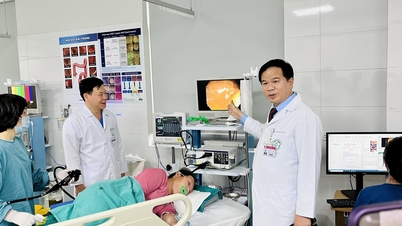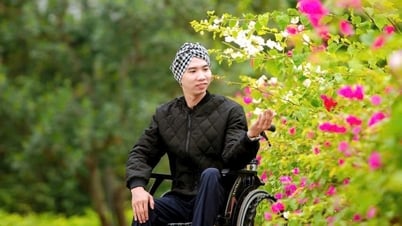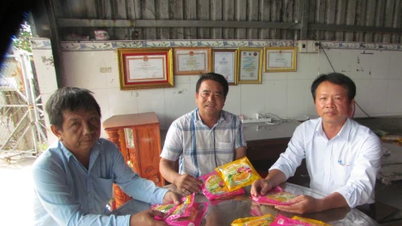A 54-year-old woman in Hai Phong had pain in her neck and shoulders. Her family took her to a private clinic and injected her directly into her neck and shoulders. After a day, her legs, arms, and then her whole body became paralyzed.

Patient hospitalized after receiving injection to treat neck and shoulder pain - Photo: BVCC
On January 13, the Central Hospital for Tropical Diseases said it had just admitted a patient with total paralysis after injecting medicine directly into the shoulder to treat shoulder and neck pain.
A week before being hospitalized, Ms. VTT (54 years old, Hai Phong) had a fever, went to the doctor and was diagnosed with dengue fever. She was treated, her fever went away, and her condition stabilized.
However, when she returned home, Ms. T. still felt pain in her neck and shoulders, so her family took her to a private clinic and gave her an injection directly into her neck and shoulder area.
A day after the injection, Ms. T. had a fever again, accompanied by paralysis of both legs that gradually spread to both arms and loss of sensation in the entire area from the waist down. Ms. T. was immediately hospitalized with a diagnosis of infection - spondylitis.
At the emergency department of the Central Hospital for Tropical Diseases, Ms. T. was conscious but completely paralyzed from the neck down. She could only move 1/5 of her paralyzed arms and her entire legs were paralyzed.
Mrs. T. also lost all sensation from the waist down, began to show signs of respiratory muscle paralysis, had to be put on a ventilator, and maintained with vasopressors.
Doctor Pham Thanh Bang, hospital emergency department, said the patient was diagnosed with septicemia - cervical myelitis with staphylococcal monitoring.
The patient was also indicated for MRI to detect diffuse spinal cord lesions, spinal cord edema causing loss of motor and sensory function, consistent with clinical presentation, with no evidence of cervical spinal abscess.
After a multidisciplinary consultation, the doctors prescribed spinal decompression and antibiotic treatment. After treatment, the patient's infection stabilized but quadriplegia improved slowly.
"This is a rare case of myelitis caused by gram-positive bacilli, especially staphylococci. Staphylococci mostly enter through intravenous injection, bacteria directly invade causing diffuse osteomyelitis (not causing meningitis), causing the entire bone marrow to lose function with clinical manifestations of paralysis," said Dr. Bang.
The cause may be due to the injection process not ensuring sterility causing infection and inflammation of the spinal cord.
In addition to medical treatment, Ms. T. was treated with a combination of traditional medicine, rehabilitation with electroacupuncture, gentle massage, and combined exercise for 2 months after the treatment to stabilize her pulpitis.
Doctor Nguyen Trung Nghia, from the hospital's traditional medicine and rehabilitation department, also said that Ms. T. was treated with acupuncture needles on acupoints in the upper limbs, the Jiaji points, and the lower limbs to stimulate the nervous and muscular systems, restoring the patient's motor and sensory functions.
Dr. Nghia added that up to now, Ms. T. has partially recovered her hand and the goal in the future is to restore hand muscle movement so that she can move independently in daily activities.
Doctors also recommend that patients with unusual health symptoms, body aches, etc. should go to a specialized medical facility for timely diagnosis and treatment.
Source: https://tuoitre.vn/dau-vai-gay-den-phong-kham-tu-tiem-roi-bi-liet-ca-nguoi-20250113115141744.htm




![[Photo] Prime Minister Pham Minh Chinh chairs a meeting on the implementation of the Lao Cai-Hanoi-Hai Phong railway project.](https://vphoto.vietnam.vn/thumb/1200x675/vietnam/resource/IMAGE/2025/5/20/0fa4c9864f63456ebc0eb504c09c7e26)






























































































Comment (0)